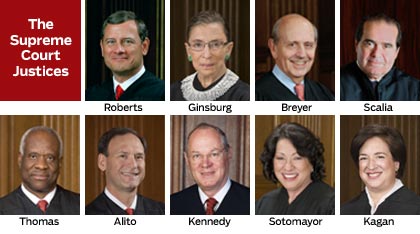The Supreme Court agreed Tuesday to decide whether the Constitution requires only eligible voters be counted when forming legislative districts, taking up a lawsuit that could shift political power to less populous rural areas from urban centers.
If successful, the challenge to the state Senate map the Texas Legislature drew in 2013 could reshape the political dynamic in states with large Hispanic populations.
 |
| Voters wait in line to cast their ballots in November 2014 in Austin, Texas. Photo: Tamir Kalifa/AP |
The lawsuit offers the high court a chance to clarify the one-person, one-vote doctrine it established in the 1960s, when the justices swept away legislative maps that gave rural voters disproportionate power over urban areas. Since then, the near-universal practice has been to draw maps based on total population without regard to legal status. Subsequent electoral disputes centered on whether the racial composition of resulting districts complies with the Voting Rights Act.
The case raises “basic questions about ‘who is a democracy for’—citizens, residents, etc.—and the extent to which those philosophical questions under our Constitution are determined by the states themselves,” said Edward Foley, an Ohio State University election-law professor.
 |
| Edward Blum of Project on Fair Representation |
The lawsuit was advanced by Edward Blum, whose Austin-based Project on Fair Representation has been litigating for years to roll back affirmative action, Voting Rights Act enforcement and other policies intended to benefit minorities.
The group’s goal is to remove noncitizens and illegal immigrants from the legislative district count, but the Supreme Court has the option of considering whether other nonvoters should be excluded in calculating voting district sizes, such as minors, felons and even people who are eligible to vote but haven’t registered.
Courts could further narrow the numbers to be counted for political representation by considering only citizens over age 18, or even just registered voters, Mr. Blum said.
Mr. Blum has been trying since 1997 to get political maps drawn based on citizen population rather than total residents. His two prior cases, challenging city council lines in Houston and Irving, Texas, lost in the lower courts and failed to interest the Supreme Court.Read the rest of the story HERE and view related videos below:
If you like what you see, please "Like" us on Facebook either here or here. Please follow us on Twitter here.



No comments:
Post a Comment